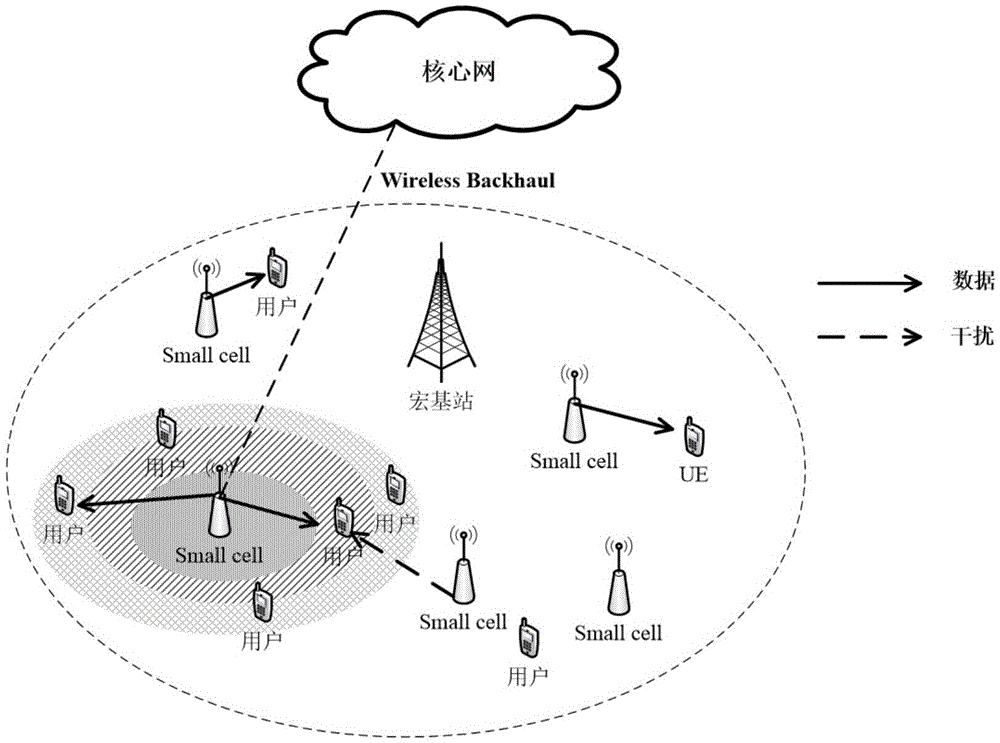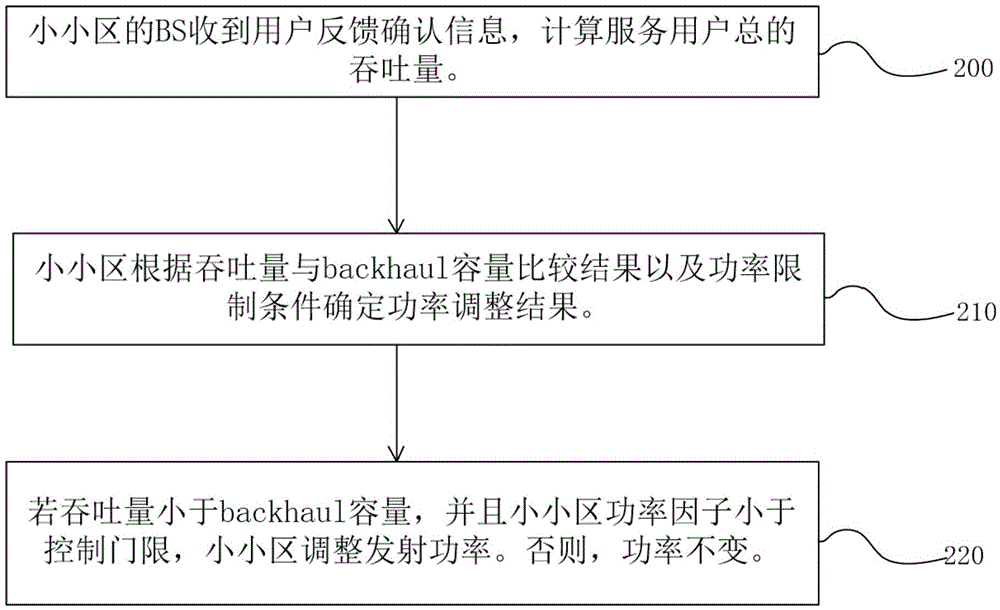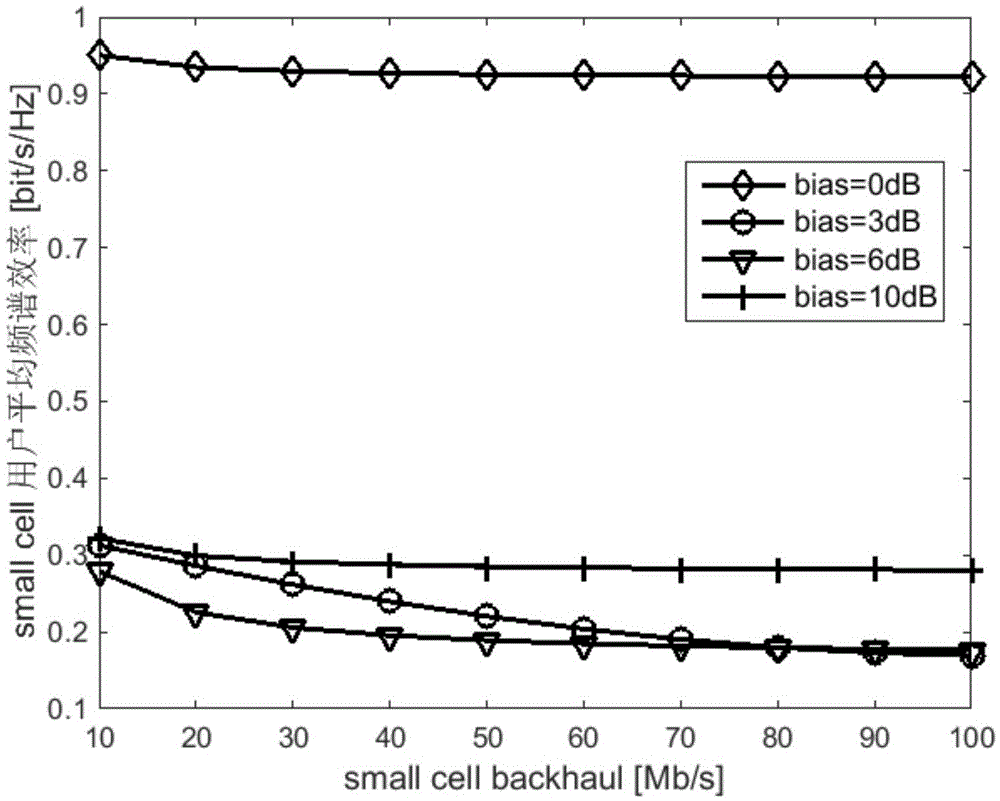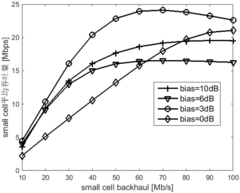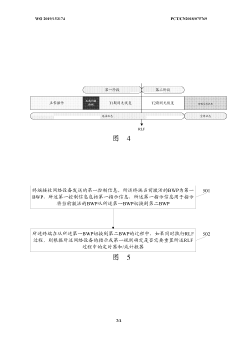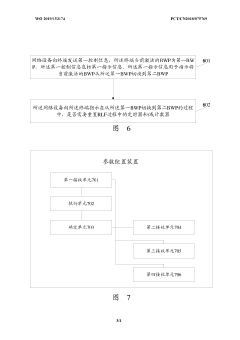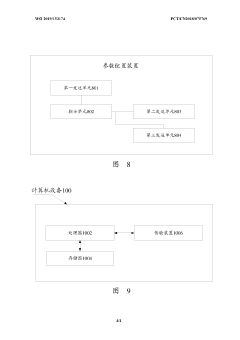What are the Challenges of 5G UC in Desert Region Connectivity?
JUL 21, 20259 MIN READ
Generate Your Research Report Instantly with AI Agent
Patsnap Eureka helps you evaluate technical feasibility & market potential.
5G UC Desert Challenges
The deployment of 5G Ultra-Capacity (UC) networks in desert regions presents unique challenges that require innovative solutions. The harsh environmental conditions, sparse population distribution, and limited infrastructure in these areas pose significant obstacles to the implementation of high-capacity wireless networks.
One of the primary challenges is the extreme temperature fluctuations characteristic of desert environments. During the day, temperatures can soar to extreme highs, while nights can be surprisingly cold. These temperature swings can adversely affect the performance and longevity of 5G equipment, necessitating robust thermal management systems and specialized hardware designs to ensure reliable operation.
The vast expanses of open terrain in desert regions create difficulties in achieving comprehensive network coverage. The lack of natural or man-made structures for mounting antennas and other network equipment limits the options for optimal placement of 5G infrastructure. This challenge is compounded by the need for line-of-sight transmission in higher frequency bands used in 5G UC networks, which can be disrupted by sand dunes and other topographical features.
Power supply and energy management present another significant hurdle. Many desert areas lack reliable access to the electrical grid, making it necessary to rely on alternative power sources such as solar panels or diesel generators. However, these solutions come with their own set of challenges, including the need for regular maintenance and the potential for equipment failure due to harsh environmental conditions.
The presence of sand and dust in the desert atmosphere poses a unique threat to 5G equipment. These particles can infiltrate sensitive electronic components, causing wear and tear, overheating, and potential system failures. Developing effective sealing and filtration systems to protect against sand and dust ingress is crucial for maintaining network reliability in desert environments.
Signal propagation in desert regions can be affected by atmospheric conditions such as sandstorms and heat haze. These phenomena can cause signal attenuation and multipath fading, reducing the overall quality and reliability of 5G communications. Advanced signal processing techniques and adaptive beamforming technologies may be necessary to mitigate these effects and maintain consistent network performance.
The sparse population density typical of desert regions presents economic challenges for network operators. The high cost of infrastructure deployment and maintenance must be balanced against the limited potential for revenue generation in areas with few subscribers. This economic reality may necessitate innovative business models and government incentives to make 5G UC deployment financially viable in these regions.
Lastly, the remote nature of many desert areas complicates network maintenance and troubleshooting. Accessing remote sites for repairs or upgrades can be logistically challenging and time-consuming, potentially leading to extended periods of service disruption. Developing robust remote monitoring and self-healing network capabilities will be essential for ensuring the long-term viability of 5G UC networks in desert environments.
One of the primary challenges is the extreme temperature fluctuations characteristic of desert environments. During the day, temperatures can soar to extreme highs, while nights can be surprisingly cold. These temperature swings can adversely affect the performance and longevity of 5G equipment, necessitating robust thermal management systems and specialized hardware designs to ensure reliable operation.
The vast expanses of open terrain in desert regions create difficulties in achieving comprehensive network coverage. The lack of natural or man-made structures for mounting antennas and other network equipment limits the options for optimal placement of 5G infrastructure. This challenge is compounded by the need for line-of-sight transmission in higher frequency bands used in 5G UC networks, which can be disrupted by sand dunes and other topographical features.
Power supply and energy management present another significant hurdle. Many desert areas lack reliable access to the electrical grid, making it necessary to rely on alternative power sources such as solar panels or diesel generators. However, these solutions come with their own set of challenges, including the need for regular maintenance and the potential for equipment failure due to harsh environmental conditions.
The presence of sand and dust in the desert atmosphere poses a unique threat to 5G equipment. These particles can infiltrate sensitive electronic components, causing wear and tear, overheating, and potential system failures. Developing effective sealing and filtration systems to protect against sand and dust ingress is crucial for maintaining network reliability in desert environments.
Signal propagation in desert regions can be affected by atmospheric conditions such as sandstorms and heat haze. These phenomena can cause signal attenuation and multipath fading, reducing the overall quality and reliability of 5G communications. Advanced signal processing techniques and adaptive beamforming technologies may be necessary to mitigate these effects and maintain consistent network performance.
The sparse population density typical of desert regions presents economic challenges for network operators. The high cost of infrastructure deployment and maintenance must be balanced against the limited potential for revenue generation in areas with few subscribers. This economic reality may necessitate innovative business models and government incentives to make 5G UC deployment financially viable in these regions.
Lastly, the remote nature of many desert areas complicates network maintenance and troubleshooting. Accessing remote sites for repairs or upgrades can be logistically challenging and time-consuming, potentially leading to extended periods of service disruption. Developing robust remote monitoring and self-healing network capabilities will be essential for ensuring the long-term viability of 5G UC networks in desert environments.
Market Demand Analysis
The market demand for 5G UC (Ultra-Capacity) connectivity in desert regions is driven by several factors, including the need for improved communication infrastructure, economic development, and technological advancements. Desert regions, often characterized by vast, sparsely populated areas, present unique challenges and opportunities for 5G deployment.
One of the primary drivers of market demand is the growing need for reliable and high-speed connectivity in remote areas. As industries such as mining, oil and gas exploration, and renewable energy projects expand into desert regions, there is an increasing requirement for robust communication networks. These industries rely heavily on real-time data transmission, remote monitoring, and automation, all of which can be significantly enhanced by 5G UC technology.
Tourism and hospitality sectors in desert regions also contribute to the market demand for improved connectivity. As these areas attract more visitors, there is a growing expectation for seamless mobile experiences, including high-speed internet access and advanced mobile services. This demand extends to both leisure travelers and business tourists attending conferences or events in desert locations.
The potential for smart city development in desert regions further fuels the market demand for 5G UC. Governments and urban planners are increasingly looking to leverage advanced technologies to create sustainable and efficient urban environments, even in challenging desert landscapes. 5G UC can enable a wide range of smart city applications, from intelligent transportation systems to efficient resource management.
Research institutions and scientific facilities located in desert regions also drive the demand for advanced connectivity. Many of these locations are chosen for their unique environmental conditions, making them ideal for astronomical observatories, climate research stations, and other scientific endeavors. These facilities require high-capacity, low-latency networks to transmit large volumes of data and support remote collaboration.
The defense and security sectors represent another significant market for 5G UC in desert regions. Military installations and border control operations in these areas require advanced communication capabilities for surveillance, coordination, and rapid response. The enhanced speed and reliability of 5G networks can significantly improve operational effectiveness in these critical applications.
Additionally, there is a growing focus on bridging the digital divide in remote and underserved areas. Governments and international organizations are increasingly recognizing the importance of providing high-speed internet access to all populations, including those in desert regions. This social and economic imperative creates a substantial market demand for innovative connectivity solutions like 5G UC.
As the global push for digital transformation continues, the market demand for 5G UC in desert regions is expected to grow significantly. The unique challenges posed by these environments, combined with the transformative potential of 5G technology, create a compelling case for investment and innovation in this space.
One of the primary drivers of market demand is the growing need for reliable and high-speed connectivity in remote areas. As industries such as mining, oil and gas exploration, and renewable energy projects expand into desert regions, there is an increasing requirement for robust communication networks. These industries rely heavily on real-time data transmission, remote monitoring, and automation, all of which can be significantly enhanced by 5G UC technology.
Tourism and hospitality sectors in desert regions also contribute to the market demand for improved connectivity. As these areas attract more visitors, there is a growing expectation for seamless mobile experiences, including high-speed internet access and advanced mobile services. This demand extends to both leisure travelers and business tourists attending conferences or events in desert locations.
The potential for smart city development in desert regions further fuels the market demand for 5G UC. Governments and urban planners are increasingly looking to leverage advanced technologies to create sustainable and efficient urban environments, even in challenging desert landscapes. 5G UC can enable a wide range of smart city applications, from intelligent transportation systems to efficient resource management.
Research institutions and scientific facilities located in desert regions also drive the demand for advanced connectivity. Many of these locations are chosen for their unique environmental conditions, making them ideal for astronomical observatories, climate research stations, and other scientific endeavors. These facilities require high-capacity, low-latency networks to transmit large volumes of data and support remote collaboration.
The defense and security sectors represent another significant market for 5G UC in desert regions. Military installations and border control operations in these areas require advanced communication capabilities for surveillance, coordination, and rapid response. The enhanced speed and reliability of 5G networks can significantly improve operational effectiveness in these critical applications.
Additionally, there is a growing focus on bridging the digital divide in remote and underserved areas. Governments and international organizations are increasingly recognizing the importance of providing high-speed internet access to all populations, including those in desert regions. This social and economic imperative creates a substantial market demand for innovative connectivity solutions like 5G UC.
As the global push for digital transformation continues, the market demand for 5G UC in desert regions is expected to grow significantly. The unique challenges posed by these environments, combined with the transformative potential of 5G technology, create a compelling case for investment and innovation in this space.
Technical Hurdles
Deploying 5G UC (Ultra-Capacity) networks in desert regions presents several significant technical challenges. The harsh environmental conditions, vast expanses of uninhabited land, and extreme temperatures pose unique obstacles to network infrastructure and signal propagation.
One of the primary hurdles is the impact of sand and dust on equipment reliability. Desert environments are characterized by frequent sandstorms and high levels of airborne particulates, which can infiltrate and damage sensitive electronic components. This necessitates the development of specialized, ruggedized hardware capable of withstanding these conditions while maintaining optimal performance.
Extreme temperature fluctuations in desert regions also pose a significant challenge. Daytime temperatures can soar well above 50°C (122°F), while nighttime temperatures can drop below freezing. These temperature swings put immense stress on network equipment, potentially leading to reduced lifespan and increased failure rates. Implementing effective cooling systems and thermal management solutions becomes crucial for maintaining network stability.
The vast, open landscapes of desert regions present challenges in terms of signal propagation and coverage. The lack of natural or man-made structures that could serve as signal reflectors or relay points means that achieving consistent coverage over large areas requires careful planning and potentially more base stations than in urban environments. This increases the complexity and cost of network deployment.
Power supply is another critical issue in desert regions. Many areas lack reliable grid connectivity, necessitating the use of alternative power sources such as solar panels or diesel generators. Ensuring a stable and continuous power supply for network equipment in remote locations is essential for maintaining service reliability.
The scarcity of existing infrastructure in desert regions also complicates network deployment. The absence of roads, fiber-optic backhaul, and other supporting infrastructure increases the logistical challenges and costs associated with installing and maintaining 5G UC equipment. This often requires innovative solutions such as satellite backhaul or microwave links to connect remote base stations to the core network.
Signal interference from atmospheric conditions unique to desert environments, such as heat haze and mirages, can affect the quality and reliability of 5G transmissions. These phenomena can cause signal refraction and multipath effects, potentially leading to degraded performance or intermittent connectivity issues.
Lastly, the dynamic nature of desert landscapes, with shifting sand dunes and changing topography, presents ongoing challenges for network planning and optimization. Regular adjustments may be necessary to maintain optimal coverage and performance as the physical environment evolves over time.
One of the primary hurdles is the impact of sand and dust on equipment reliability. Desert environments are characterized by frequent sandstorms and high levels of airborne particulates, which can infiltrate and damage sensitive electronic components. This necessitates the development of specialized, ruggedized hardware capable of withstanding these conditions while maintaining optimal performance.
Extreme temperature fluctuations in desert regions also pose a significant challenge. Daytime temperatures can soar well above 50°C (122°F), while nighttime temperatures can drop below freezing. These temperature swings put immense stress on network equipment, potentially leading to reduced lifespan and increased failure rates. Implementing effective cooling systems and thermal management solutions becomes crucial for maintaining network stability.
The vast, open landscapes of desert regions present challenges in terms of signal propagation and coverage. The lack of natural or man-made structures that could serve as signal reflectors or relay points means that achieving consistent coverage over large areas requires careful planning and potentially more base stations than in urban environments. This increases the complexity and cost of network deployment.
Power supply is another critical issue in desert regions. Many areas lack reliable grid connectivity, necessitating the use of alternative power sources such as solar panels or diesel generators. Ensuring a stable and continuous power supply for network equipment in remote locations is essential for maintaining service reliability.
The scarcity of existing infrastructure in desert regions also complicates network deployment. The absence of roads, fiber-optic backhaul, and other supporting infrastructure increases the logistical challenges and costs associated with installing and maintaining 5G UC equipment. This often requires innovative solutions such as satellite backhaul or microwave links to connect remote base stations to the core network.
Signal interference from atmospheric conditions unique to desert environments, such as heat haze and mirages, can affect the quality and reliability of 5G transmissions. These phenomena can cause signal refraction and multipath effects, potentially leading to degraded performance or intermittent connectivity issues.
Lastly, the dynamic nature of desert landscapes, with shifting sand dunes and changing topography, presents ongoing challenges for network planning and optimization. Regular adjustments may be necessary to maintain optimal coverage and performance as the physical environment evolves over time.
Current 5G Solutions
01 5G Ultra-Capacity network architecture
5G UC networks utilize advanced architecture to provide high-capacity, low-latency connectivity. This includes the use of massive MIMO, beamforming, and carrier aggregation technologies to enhance network performance and capacity.- 5G Ultra-Capacity network architecture: 5G UC networks utilize advanced architecture to provide high-capacity, low-latency connectivity. This includes the use of massive MIMO, beamforming, and carrier aggregation technologies to enhance network performance and capacity. The architecture supports ultra-high-speed data transmission and improved coverage in dense urban areas.
- Spectrum utilization in 5G UC: 5G UC leverages a combination of low-band, mid-band, and high-band (mmWave) spectrum to deliver ultra-high capacity and coverage. This multi-band approach allows for flexible deployment strategies, optimizing network performance based on specific environmental and usage requirements.
- Device-to-network connectivity enhancements: 5G UC incorporates advanced connectivity features to improve device-to-network communication. This includes enhanced handover mechanisms, dynamic spectrum sharing, and intelligent network selection algorithms to ensure seamless connectivity and optimal performance as users move between different network environments.
- Quality of Service (QoS) management in 5G UC: 5G UC networks implement sophisticated QoS management techniques to prioritize and optimize traffic based on application requirements. This includes advanced scheduling algorithms, network slicing, and dynamic resource allocation to ensure consistent performance for critical services and applications in high-demand scenarios.
- Energy efficiency in 5G UC deployments: 5G UC networks incorporate energy-efficient technologies and operational strategies to optimize power consumption while maintaining high-capacity connectivity. This includes adaptive power management, sleep mode optimization for network elements, and the use of AI/ML algorithms to predict and manage network load for improved energy efficiency.
02 Spectrum utilization in 5G UC
5G UC leverages a combination of low-band, mid-band, and high-band (mmWave) spectrum to deliver ultra-high capacity and speeds. This multi-band approach allows for improved coverage and capacity in various deployment scenarios.Expand Specific Solutions03 Device connectivity and management in 5G UC networks
Advanced device management techniques are employed in 5G UC networks to optimize connectivity, including intelligent handover mechanisms, power management, and multi-connectivity solutions to ensure seamless user experience across different network conditions.Expand Specific Solutions04 Network slicing and virtualization for 5G UC
5G UC networks utilize network slicing and virtualization technologies to create customized network instances for different use cases and applications, enabling efficient resource allocation and improved quality of service for diverse requirements.Expand Specific Solutions05 Edge computing integration with 5G UC
5G UC networks incorporate edge computing capabilities to reduce latency and improve performance for demanding applications. This integration enables real-time processing and data analysis closer to the end-user, enhancing the overall network efficiency and user experience.Expand Specific Solutions
Key Industry Players
The 5G UC connectivity in desert regions presents a competitive landscape in an emerging market phase. While the technology is maturing, challenges specific to harsh environments are driving innovation. The market size is expanding as telecom operators and equipment manufacturers recognize the potential for connecting remote areas. Key players like Huawei, Ericsson, and Samsung are leveraging their expertise in 5G infrastructure to develop solutions tailored for desert conditions. Emerging companies and research institutions are also contributing to advancements in antenna design, power efficiency, and signal propagation techniques to overcome the unique obstacles posed by desert terrain and climate.
Huawei Technologies Co., Ltd.
Technical Solution: Huawei has developed innovative solutions for 5G UC in desert regions, focusing on overcoming harsh environmental challenges. Their approach includes advanced antenna designs that can withstand extreme temperatures and sand exposure[1]. Huawei's RuralStar Pro solution utilizes integrated access and backhaul technology, enabling cost-effective coverage in remote areas[2]. They have also implemented AI-powered network optimization algorithms to dynamically adjust signal strength and coverage based on changing desert conditions[3]. Additionally, Huawei has developed solar-powered base stations with high-efficiency batteries to address power supply issues in remote desert locations[4].
Strengths: Robust hardware design, innovative power solutions, and AI-driven optimization. Weaknesses: Potentially higher initial deployment costs and reliance on proprietary technologies.
Telefonaktiebolaget LM Ericsson
Technical Solution: Ericsson has developed a comprehensive approach to address 5G UC challenges in desert regions. Their solution incorporates advanced radio designs with improved heat dissipation and dust resistance[5]. Ericsson's Massive MIMO technology has been adapted for desert environments, providing enhanced coverage and capacity in sparse populations[6]. They have also implemented a software-defined networking (SDN) approach to optimize network resources dynamically based on usage patterns in desert areas[7]. Ericsson's energy-efficient Radio System portfolio includes solutions specifically designed for remote locations, utilizing renewable energy sources and intelligent power management[8].
Strengths: Advanced radio technology, flexible network architecture, and energy-efficient solutions. Weaknesses: Potential challenges in local partnerships and adaptation to specific regional requirements.
Core 5G Innovations
Load balancing methods for ultra-dense network non-ideal Backhaul deployment
PatentActiveCN105611571A
Innovation
- By independently performing power control in the small base station and adjusting the power factor according to the backhaul capacity of the small base station, user offloading and reasonable utilization of resources are achieved, ensuring that the throughput of the small base station does not exceed the backhaul capacity and avoiding an increase in delay.
Parameter configuration method and apparatus, and computer storage medium
PatentWO2019153174A1
Innovation
- Through the control information sent by the network device, the terminal decides whether to reset the timer and counter in the RLF process according to the instructions or rules during the BWP handover process, using the frequency domain position and frequency domain difference of the BWP and the threshold value in the configuration information. Make judgments.
Environmental Impact
The deployment of 5G UC (Ultra-Capacity) networks in desert regions presents unique environmental challenges that must be carefully considered. The harsh desert climate, characterized by extreme temperatures, sandstorms, and scarce water resources, poses significant obstacles to the installation and maintenance of 5G infrastructure.
Extreme temperatures in desert environments can severely impact the performance and longevity of 5G equipment. During daytime, temperatures can soar well above 50°C (122°F), potentially causing overheating and thermal stress on sensitive electronic components. Conversely, nighttime temperatures can plummet below freezing, subjecting the equipment to thermal cycling and potentially leading to material fatigue and premature failure.
Sandstorms and wind-blown dust are another major environmental concern in desert regions. These phenomena can cause abrasive damage to exposed equipment, clog air filters, and interfere with signal propagation. The accumulation of sand and dust on solar panels, which are often used to power remote 5G base stations, can significantly reduce their efficiency and require frequent cleaning.
Water scarcity in desert regions presents challenges for cooling systems and general maintenance of 5G infrastructure. Traditional liquid cooling solutions may not be feasible, necessitating the development of innovative, water-efficient cooling technologies. Additionally, the lack of readily available water complicates the process of cleaning equipment and managing dust accumulation.
The impact of 5G UC deployment on the fragile desert ecosystem must also be considered. The construction of towers, laying of fiber optic cables, and installation of other supporting infrastructure can disrupt local flora and fauna. Careful environmental impact assessments and mitigation strategies are essential to minimize ecological damage and preserve biodiversity.
Energy consumption is another critical environmental factor. The power requirements for 5G networks in remote desert locations often necessitate the use of diesel generators, which contribute to air pollution and greenhouse gas emissions. Integrating renewable energy sources, such as solar and wind power, can help mitigate these environmental impacts but presents its own set of challenges in terms of reliability and energy storage in harsh desert conditions.
Lastly, the visual impact of 5G infrastructure on the desert landscape must be addressed. Tall communication towers and extensive antenna arrays can detract from the natural beauty of desert vistas, potentially affecting tourism and local communities' quality of life. Innovative design solutions and camouflage techniques may be necessary to minimize the visual footprint of 5G installations in these sensitive environments.
Extreme temperatures in desert environments can severely impact the performance and longevity of 5G equipment. During daytime, temperatures can soar well above 50°C (122°F), potentially causing overheating and thermal stress on sensitive electronic components. Conversely, nighttime temperatures can plummet below freezing, subjecting the equipment to thermal cycling and potentially leading to material fatigue and premature failure.
Sandstorms and wind-blown dust are another major environmental concern in desert regions. These phenomena can cause abrasive damage to exposed equipment, clog air filters, and interfere with signal propagation. The accumulation of sand and dust on solar panels, which are often used to power remote 5G base stations, can significantly reduce their efficiency and require frequent cleaning.
Water scarcity in desert regions presents challenges for cooling systems and general maintenance of 5G infrastructure. Traditional liquid cooling solutions may not be feasible, necessitating the development of innovative, water-efficient cooling technologies. Additionally, the lack of readily available water complicates the process of cleaning equipment and managing dust accumulation.
The impact of 5G UC deployment on the fragile desert ecosystem must also be considered. The construction of towers, laying of fiber optic cables, and installation of other supporting infrastructure can disrupt local flora and fauna. Careful environmental impact assessments and mitigation strategies are essential to minimize ecological damage and preserve biodiversity.
Energy consumption is another critical environmental factor. The power requirements for 5G networks in remote desert locations often necessitate the use of diesel generators, which contribute to air pollution and greenhouse gas emissions. Integrating renewable energy sources, such as solar and wind power, can help mitigate these environmental impacts but presents its own set of challenges in terms of reliability and energy storage in harsh desert conditions.
Lastly, the visual impact of 5G infrastructure on the desert landscape must be addressed. Tall communication towers and extensive antenna arrays can detract from the natural beauty of desert vistas, potentially affecting tourism and local communities' quality of life. Innovative design solutions and camouflage techniques may be necessary to minimize the visual footprint of 5G installations in these sensitive environments.
Regulatory Framework
The regulatory framework for 5G UC deployment in desert regions presents unique challenges and considerations. Given the sparse population and vast expanses of undeveloped land, traditional regulatory approaches may need to be adapted to ensure effective connectivity while addressing environmental and security concerns.
One of the primary regulatory challenges is spectrum allocation. Desert regions often have fewer competing demands for spectrum, which could allow for more flexible allocation policies. However, regulators must balance this potential advantage with the need to maintain consistency with national and international spectrum management frameworks. This may require innovative approaches to spectrum licensing that account for the specific needs of desert deployments while ensuring compatibility with broader regulatory objectives.
Environmental regulations pose another significant hurdle for 5G UC deployment in desert areas. The sensitive ecosystems and often protected status of many desert regions necessitate stringent environmental impact assessments and mitigation measures. Regulators must develop guidelines that protect fragile desert environments while enabling the infrastructure development necessary for 5G connectivity. This may include regulations on tower placement, power consumption, and the use of renewable energy sources to minimize ecological disruption.
Security and border control considerations also play a crucial role in shaping the regulatory framework for desert 5G deployments. Many desert regions span international borders, requiring careful coordination between national regulatory bodies to ensure seamless connectivity while addressing security concerns. Regulations may need to address issues such as cross-border signal propagation, data sovereignty, and the potential use of 5G infrastructure for surveillance and border monitoring.
The regulatory framework must also consider the economic viability of 5G UC deployments in sparsely populated desert regions. Regulators may need to explore innovative funding models, such as public-private partnerships or universal service funds, to incentivize investment in areas where traditional market-driven approaches may not be sufficient. This could include regulations that promote infrastructure sharing, reduce deployment costs, or provide tax incentives for operators willing to invest in challenging desert environments.
Lastly, the regulatory framework should address the unique maintenance and operational challenges posed by desert environments. This may include regulations on equipment standards to ensure resilience to extreme temperatures, dust, and other harsh conditions. Additionally, regulators may need to develop guidelines for remote monitoring and maintenance practices that account for the logistical challenges of accessing infrastructure in remote desert locations.
One of the primary regulatory challenges is spectrum allocation. Desert regions often have fewer competing demands for spectrum, which could allow for more flexible allocation policies. However, regulators must balance this potential advantage with the need to maintain consistency with national and international spectrum management frameworks. This may require innovative approaches to spectrum licensing that account for the specific needs of desert deployments while ensuring compatibility with broader regulatory objectives.
Environmental regulations pose another significant hurdle for 5G UC deployment in desert areas. The sensitive ecosystems and often protected status of many desert regions necessitate stringent environmental impact assessments and mitigation measures. Regulators must develop guidelines that protect fragile desert environments while enabling the infrastructure development necessary for 5G connectivity. This may include regulations on tower placement, power consumption, and the use of renewable energy sources to minimize ecological disruption.
Security and border control considerations also play a crucial role in shaping the regulatory framework for desert 5G deployments. Many desert regions span international borders, requiring careful coordination between national regulatory bodies to ensure seamless connectivity while addressing security concerns. Regulations may need to address issues such as cross-border signal propagation, data sovereignty, and the potential use of 5G infrastructure for surveillance and border monitoring.
The regulatory framework must also consider the economic viability of 5G UC deployments in sparsely populated desert regions. Regulators may need to explore innovative funding models, such as public-private partnerships or universal service funds, to incentivize investment in areas where traditional market-driven approaches may not be sufficient. This could include regulations that promote infrastructure sharing, reduce deployment costs, or provide tax incentives for operators willing to invest in challenging desert environments.
Lastly, the regulatory framework should address the unique maintenance and operational challenges posed by desert environments. This may include regulations on equipment standards to ensure resilience to extreme temperatures, dust, and other harsh conditions. Additionally, regulators may need to develop guidelines for remote monitoring and maintenance practices that account for the logistical challenges of accessing infrastructure in remote desert locations.
Unlock deeper insights with Patsnap Eureka Quick Research — get a full tech report to explore trends and direct your research. Try now!
Generate Your Research Report Instantly with AI Agent
Supercharge your innovation with Patsnap Eureka AI Agent Platform!
